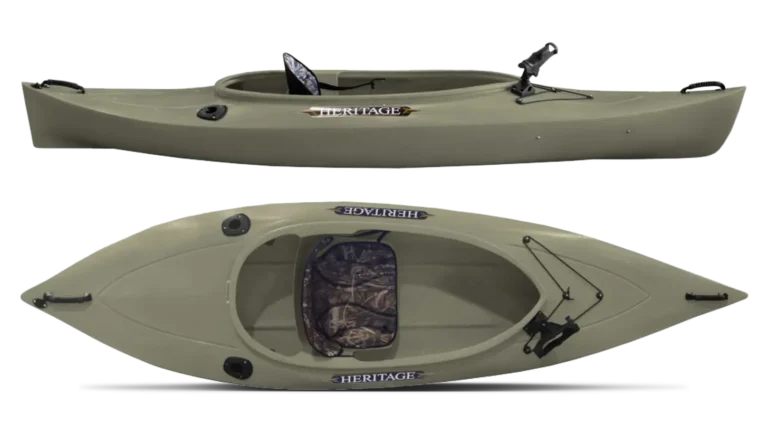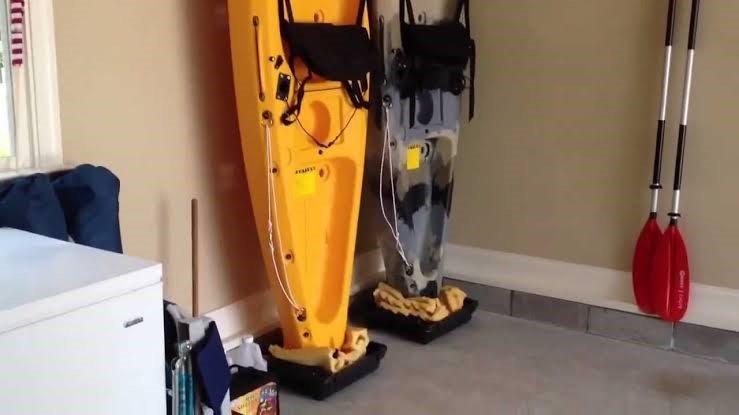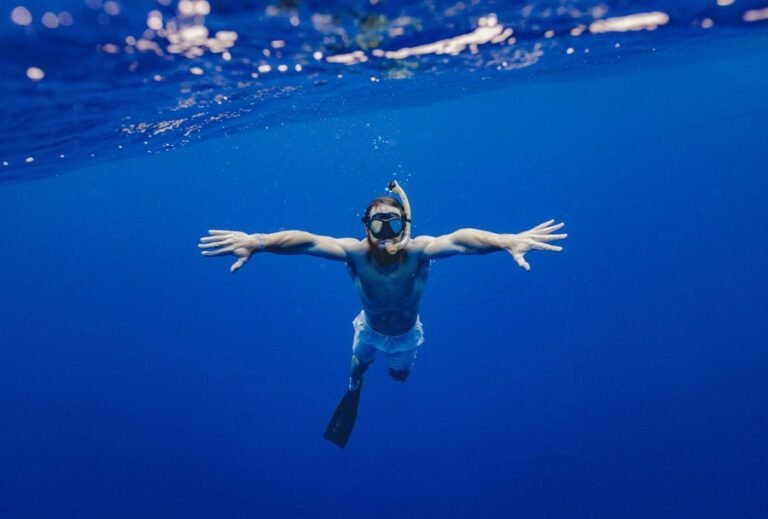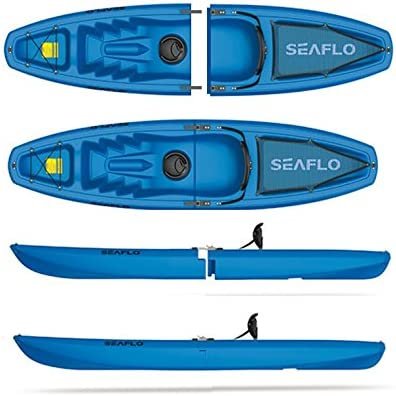How Long Does It Take To Kayak A Mile?
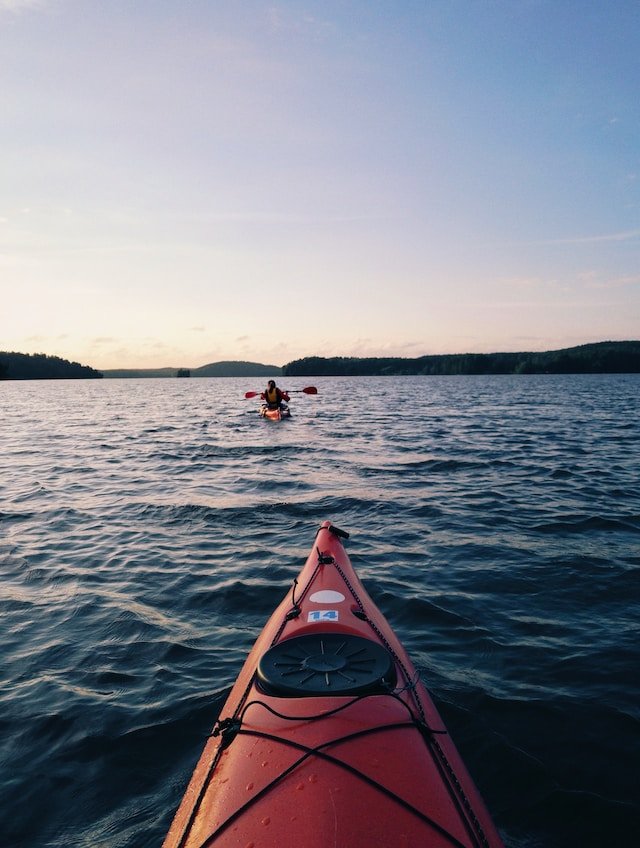
Kayaking is a popular paddle sport, and once you find its joys, you desire more and more to find your way to the water and have fun. Naturally, you can’t kayak all the time and will eventually have to time your trips to make the most of them.
It won’t be long before you find yourself asking, “How long will it take me to kayak a mile?” You need this answer to know how much time you’ll be spending on the water to help make your plans, especially if you are taking a tour or planning an expedition.
The answer to this question varies with each kayaker and depends on several factors including the kayaker’s experience, the type of kayak he is paddling in, how fast he is paddling, whether he takes breaks, and the wind and wave conditions.
This article explains these factors in detail to help you ascertain how long it would take to kayak a mile.
How Long Would It Take The Average Kayaker To Kayak A Mile?
An average kayaker is someone who enjoys spending time outdoors paddling on lakes, rivers, and streams. They may also enjoy occasional trips to the ocean.
Average kayakers typically have some basic knowledge of kayaking and are comfortable with basic strokes and maneuvers.
Some average kayakers may even participate in races or other competitions from time to time. However, most average kayakers simply enjoy the sport for recreation and exercise.
As an average kayaker who mostly enjoys kayaking for recreation and exercise, he may have built great endurance but not necessarily much speed.
The average kayaker can move through water at a speed of 2 to 3 miles per hour. This implies that he kayaks a mile in about 20 to 30 minutes on flat calm water.
As mentioned earlier, these figures can change based on several factors but generally, regardless of the conditions around a kayaker, he will cover a mile in about 20 to 45 minutes.
Factors Affecting How Long It Would Take You To Kayak A Mile
On average, it should take you 30 minutes to kayak a mile if you paddle continuously without breaks in relatively calm and flat waters.
The time it would take you while paddling at the same speed on a river will decrease when you’re going with the current, while if you’re going against the current, it will increase.
It stands to reason, therefore, that some factors affect kayak speed and thus affect the time it will take to kayak a mile. These factors include:
- How fast you can paddle a kayak
- The type of kayak you are paddling
- Water conditions
- Wind conditions
- Paddling technique
How Fast Can You Paddle A Kayak?
Ultimately, the rate at which a kayaker covers liquid estate depends on the wind, the waves, and his speed. Even in the best of conditions, if you are paddling lazily, you will not be able to cover much ground.
The speed of most paddlers is 2 to 2.5 knots with more experienced paddlers being able to reach 3 knots. Going by this speed, you should be able to kayak a mile in between 20 to 30 minutes.
Kayak Type And Kayak Speed
As kayaking is a sport for all who would participate in it, it has several types to cater to all enthusiasts, and thus different types of kayaks exist for different purposes. Key factors when purchasing kayaks include speed, stability, and maneuverability, but our focus is speed.
The type of kayak you choose will have a maximum speed it can reach and that speed will affect how quickly you can cover a mile when paddling on the water. For easy comparison, we shall examine the kayak types from fastest to slowest in flat calm waters.
Note that whitewater kayaks for instance are designed to navigate rapids and as such would not cover much ground when in flat water. One other interesting thing to note about watercraft, in general, is that the longer they are, the faster they will be.
So, if you upgrade from a 10-foot recreation kayak to a 12-foot recreation kayak, for instance, you will notice you are able to move faster with the same paddling speed. Similarly, the narrower the kayak, the faster it will be.
- Thin-beamed race kayaks: As per their name, these vessels are designed for speed and agility. They are narrower than traditional kayaks with widths of 20 inches or less. They are also quite long.
- Sea kayaks: Made for kayakers who love paddling in seas and oceans, these kayaks are quite fast to resist the waves. They are similar to touring kayaks in that they are ideal for covering long distances quickly. They are easily more than 15 feet long and are 23 to 24 inches wide on average.
- Touring kayaks: These kayaks are ideal for those who are touring or going on long expeditions. They cover ground quickly and are generally between 12 to 18 feet long. Touring kayaks typically have a width of 26 inches.
- Sit-inside recreational kayaks: on average, these vessels are usually 10 feet long and 28 inches wide. They are suitable for recreational paddling and relaxation on the water.
- Sit-on-top recreational kayaks: They are not much different in length from the sit-inside version. The major difference is in the cockpit style and the fact that they are made to be slower but more stable than their counterparts.
- Fishing kayaks: Anyone who has ever gone fishing knows that patience is very important. It is thus no surprise that kayaks designed for fishing are quite slow as they are not meant for speed. They are, however, very stable and have great storage capacity.
- Whitewater kayaks: They are designed to navigate rapids and give exhilaration, so they move remarkably slowly and without stability in flat calm waters.
It is easy for a kayaker to move at 2 to 2.5 knots in a touring kayak making it possible for him to kayak a mile in about 30 minutes.
If he uses a faster kayak like a sea kayak, for instance, he can decrease the time by up to 10 minutes, meaning he will cover a mile in about 20 minutes.
However, should he use a slower kayak like a fishing kayak, he will be adding at least 10 minutes to his trip meaning he will kayak a mile in about 40 to 45 minutes.
The kayak type you are using greatly influences how fast you can move so be sure to make a wise choice. Depending on your purpose, you will most likely want to go for recreational, touring, or sea kayaks.
Water Conditions
The conditions of the water will naturally determine not only the speed at which you kayak but also how enjoyable your paddling experience will be.
Paddling in flat calm waters is easy and there how quickly you move depends on how fast you paddle. Paddling in choppy or rough waters is, however, a different story as it makes paddling considerably more difficult.
If the waves are against you, you won’t be able to cover much ground and could even get hurt. Water conditions can generally be grouped into currents and tides.
Current Conditions
This comes into play when you are kayaking in a river, stream, spring, or other water body that has currents. The current speed is how quickly water flows in the water body and it determines how quickly you will move.
Say you are paddling your kayak at 2 knots in a river flowing at 2.5 knots and you are moving with the current.
Your speed effectively becomes 4.5 knots and you will notice you are covering liquid estate at a phenomenal speed. The same will not hold if you are paddling up the river and have to fight against the current.
This is because you will lose speed fighting the direction of the river and if the river is flowing faster than you can paddle against it, you won’t be going forward and might even get carried away by the current.
Before paddling in any water body, make sure you research and have an idea of its water conditions to help in planning your trip.
Tide Conditions
You will have to worry about the tides when kayaking in a sea or ocean and your paddling time to when the experience will be most enjoyable. The tides are caused by the gravitational pull of the moon and the sun on the Earth’s oceans.
The moon’s gravity is stronger than the sun’s, so it has a greater effect on the tides. The tides are highest when the moon is full or new and lowest when the moon is in its first or last quarter. The tidal range, or the difference between high and low tide, can be as much as 15 feet (4.6 meters).
To get the most enjoyment from your paddling experience, you should kayak when the conditions are midway between the high and low tide. If you get caught up in the tides, it will make paddling back to shore both difficult and unsafe.
Wind Conditions
Though all weather conditions play their part in how enjoyable your paddling experience can be and how fast you can move, wind conditions play the greatest role.
Similar to current conditions, if you are paddling with the wind you will get a boost and when you paddle against the wind you lose speed.
There is also the problem that the lighter, shorter, and wider your kayak is, the likelier it will be affected by the wind. This is especially true for light kayaks that can be easily blown off course by an unfavorable wind.
Before going kayaking, always check the weather forecast and keep an eye on the wind while on the water to ensure you have a safe paddling adventure. If the wind turns contrary, you are advised to seek shelter.
Paddling Technique
A crucial factor that affects how quickly you paddle and thus how long it will take you to kayak a mile is your paddling technique. Generally, there are two paddling techniques: the low-angle and the high-angle paddle technique.
- The low-angle paddling style: This style involves paddling by dipping your paddle at a relatively low angle to the water. It involves the use of a low paddle and is a relaxed and easy-going paddling style. If you are paddling this way, it would take you longer than someone paddling with the high-angle technique to kayak a mile.
- The high-angle paddling style: In this paddling style, the kayaker’s paddle is more the vertical and thus makes a great angle with respect to the water surface. This paddling style is faster and more aggressive than the low-angle paddling style. If this is your paddling technique, you will naturally cover more ground than those using the low-angle style.
How Fast Can You Kayak In A Pedal Kayak?
A pedal kayak is a type of kayak that is propelled by pedals, rather than a paddle. The pedals are usually located in the middle of the kayak, and the rider sits on top of the kayak.
Pedal kayaks are becoming increasingly popular, as they offer a more efficient and hands-free way to paddle. They are ideal for long-distance paddling, as well as for fishing and photography.
People generally have stronger legs than arms, so pedal kayaks make for an easier kayaking time, but how fast you go still depends on your physical fitness and how fast you can pedal.
Pedal kayaks typically average 3.5 to 4 knots, so you will be covering the one-mile distance in about 12 to 17 minutes, depending on how fast you paddle.
In both paddle and pedal kayaks, the kayaker’s endurance is key to maintaining speed and following his schedule.
It takes the average person anywhere from 20 minutes to 45 minutes to kayak a mile. This can vary depending on the person’s kayaking experience, the current weather conditions, the type of kayak he is paddling, and the difficulty of the terrain.
With practice and proper preparation, anyone can enjoy a leisurely paddle down a river or through calm waters, with some people being able to do it faster while others may take a bit longer.
So, if you’re ever feeling up for a challenge, time yourself and see how long it takes you to kayak a mile!
How Long Does It Take To Kayak 3 Miles?
With time, you will want to extend your paddling sessions, and kayaking 3 miles is a common milestone. It should take you about 90 minutes to kayak 3 miles.
The paddling session will take a toll on your energy, especially if this is your first time, so bring water and some energy bars on the trip with you. You should also take breaks as needed for your good health.
How Long Does It Take To Kayak 10 Miles?
Should you decide to cover this much liquid estate, you will be spending about 5 hours on the water if you are averaging 2 to 2.5 knots.
Remember the importance of breaks, snacks, and hydration and you will be fine.
Kayaking for 10 miles is no joke and would require you to build a lot of stamina and endurance, so be sure you are prepared before embarking on the adventure.

